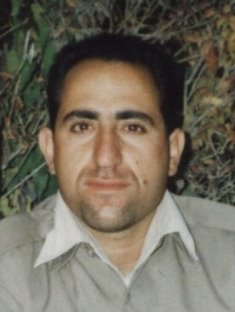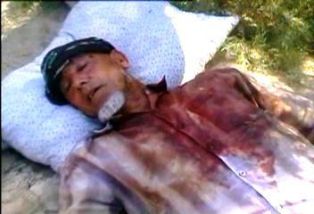(New York) - Iranian security forces should immediately halt the use of excessive force against demonstrators in an ethnic Arab province of southwestern Iran, Human Rights Watch said today. The authorities should open independent and transparent investigations into all alleged killings there since protests began on April 14, 2011, Human Rights Watch said.
Authorities should also restore regular telephone and internet communications to the region, Khuzestan province, and allow independent international media and human rights organizations free access to conduct investigations in the province.
Iranian rights activists and international media have reported that Iranian security forces fired live ammunition as well as teargas at largely peaceful protesters on a number of occasions, killing several dozen protesters since the demonstrations began. Human Rights Watch also received reports that authorities have arrested several hundred protesters and rights activists in Khuzestan and severely curtailed communications in the area.
"Iran has made it impossible to confirm the scale of the deadly violence against protesters in Khuzestan province, making transparent and independent investigations into alleged killings and arrests there absolutely essential," said Joe Stork, deputy Middle East director at Human Rights Watch. "Iran's wall of silence around Khuzestan certainly makes it seem that the government is trying to hide what its security forces have been doing there."
Authorities have thus far provided little information about people killed or injured during the protests, but the government announced the arrest of several members of what officials referred to as an Arab separatist group they allege was responsible for killing three people, including a police officer.
Khuzestan province, where much of Iran's oil and gas reserves are located, has a large ethnic Arab population believed to number more than 2 million. Despite Khuzestan's natural resource wealth, its ethnic Arab population, which is believed to constitute a majority in the province, has long complained about the lack of socio-economic development in the region. They also allege that the Iranian government has engaged in systematic discrimination against them, particularly in the areas of employment, housing, and civil and political rights.
The crackdown against protesters and rights activists began after Iranian-Arab activists called for a "day of anger" protest on April 15 to mark the anniversary of demonstrations in Ahvaz in 2005. The April 2011 demonstration, organized via social networking websites such as Facebook and Twitter, spread from Ahvaz to other cities in Khuzestan such as Hamidieh, Mahshahr, Shadegan, Abadan, and Khorramshahr, according to the International Minorities Human Rights Organization (IMHRO), a London-based group that focuses on the rights of minorities in Iran.
A resident of the city of the Ahvaz told Human Rights Watch that security forces including Basij, armed police, plainclothes agents, and intelligence agents surrounded and infiltrated several Arab-majority areas in Ahvaz a week prior to planned demonstrations on April 15. He said that for about a week prior to the protests Ahvaz appeared to be under martial law. Movement between Arab neighborhoods in Ahvaz became extremely restricted as security forces set up checkpoints throughout the city, and masked security forces began launching home raids and arresting targeted individuals including rights activists. The resident told Human Rights Watch that he witnessed several dozen young Arabs being picked up by plainclothes security officers during some of these raids.
According to the witness, clashes broke out on April 14 between security forces attempting to arrest several individuals in the Homa neighborhood of Ahvaz and the residents' families and neighbors. The clashes led to the deaths of three individuals. The resident told Human Rights Watch that the next day, Friday, hundreds of Ahvazi residents filled the streets of Ahvaz but because of the heavy security presence protests remained isolated and scattered within the various Arab neighborhoods. The resident said:
Security forces shot directly at protesters with Kalishnikovs and used teargas and other choke-inducing gases against us. I saw at least eight people who had been hit by live ammunition fire shot by armed forces on motorcycles.... We tried to help the injured but we could not because the area was completely surrounded by security forces, and we heard news that the local hospital was under the control of security forces and anyone who goes there will be arrested.The resident told Human Rights Watch that a little while later men in his neighborhood attacked a local police station after they witnessed the killing of one of their fellow protesters. At least one person was killed during the clashes and several others were injured. "We could not help the injured because of the intensity of the gunfire," he said. "They were taken away by security forces."
On the evening of April 15, security forces, often masked, continued nighttime raids against individuals suspected of participating in the protests, the witness told Human Rights Watch. He said that he witnessed several of these raids, including the arrest of seven Arab women by security forces.
On April 26, IMHRO provided Human Rights Watch with the names of 27 people it said had been killed by Iranian security forces since the outbreak of violence. The group also said that authorities have arrested several hundred protesters and rights activists. On the same day, a representative from the Ahwazi Organization for the Defense of Human Rights (AODHR), also based in London, told Human Rights Watch that since April 15 Iranian security forces "killed 48 innocent protesters, injured tens and arrested hundreds of Ahwazis."
Human Rights Watch has not been able to verify independently the numbers and identities of persons killed, injured, or arrested due to the security situation in Khuzestan province and severe government restrictions placed on independent reporting in the region.
Several sources informed Human Rights Watch that after April 15, despite the security presence in Ahvaz and other Arab-majority towns in Khuzestan province, there were a few additional protests. Authorities have severely disrupted internet and mobile phone access in Ahvaz and many other towns throughout Khuzestan province during the past week or two.
On April 18, the Iranian rights activist and Nobel Peace Laureate Shirin Ebadi wrote a letter to Navi Pillay, UN High Commissioner for Human Rights, stating that Iranian security forces had killed "more than 12 people" and injured dozens more in Khuzestan. Arabic-language outlets such as Al Jazeera and Al Arabiya have provided varying accounts of the violence and the numbers of dead, injured, and detained.
On April 21, Iranian state television reported the arrest of eight members of the "Arab Peoples Group" during the early morning hours. An official said that on April 15, the eight men had carried out an "armed attack" against a police station in Ahvaz that resulted in the deaths of three people, including one police officer, and several injuries. On April 16, the semi-official Fars News Agency quoted a police official as saying that at least one person had been killed and two injured "at the hands of an armed insurgent."
The April 2011 protests mark the sixth anniversary of the 2005 protests in Khuzestan in which security forces opened fire to disperse demonstrators in Ahvaz and other cities and towns in the province. The 2005 protests erupted following the publication of a letter allegedly written by Mohammad Ali Abtahi, an advisor to President Mohammad Khatami. The letter referred to government plans to implement policies that would reduce the proportion of ethnic Arabs in Khuzestan's population. After security forces tried to disperse the demonstrators and opened fire on them, clashes between protesters and security forces turned violent. The next day, Abtahi and other government officials denied the authenticity of the letter, calling it fake. Security forces killed at least 50 protestors and detained hundreds more during the 2005 protests.
The 2005 crackdown led to a cycle of violence throughout Khuzestan province, including several fatal bomb attacks in June and October 2005 and in January 2006 that killed 12 people. In response, the Iranian government imprisoned numerous activists it claimed were Arab separatists responsible for terrorist attacks against civilians, and sentenced more than a dozen people to death on terrorism-related charges. Since 2006, authorities have executed more than a dozen Iranians of Arab origin following flawed trials.
"In light of numerous reports of killings and mass arrests in Khuzestan and the government's track record of abuse against its ethnic Arab minority, the onus is squarely on authorities," Stork said. "The government needs to allow independent reporting in the region, provide a full and transparent accounting of persons killed or arrested by security forces during the past several weeks, and prosecute anyone responsible for human rights violations."




























































No comments:
Post a Comment